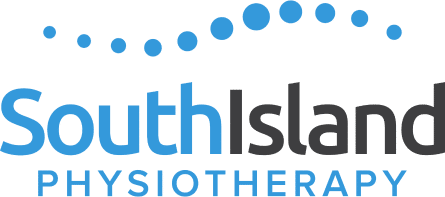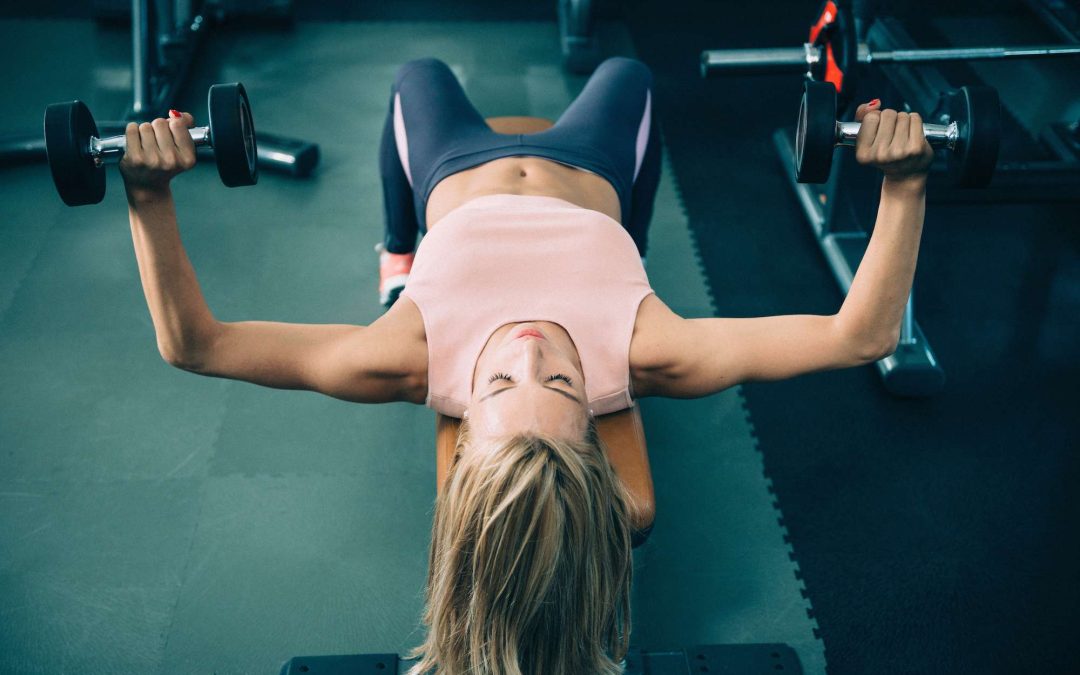
by Colin Beattie | Apr 14, 2024 | news
So you are looking for a strength training program for beginners…
Are you a beginner looking to kickstart your fitness journey with a solid strength training program? You’ve come to the right place! Strength training, also known as weight training or resistance training, offers numerous benefits for beginners, including building muscle, increasing strength, enhancing metabolism, and boosting overall health. In this comprehensive guide, we’ll walk you through a beginner-friendly workout routine that incorporates key exercises targeting major muscle groups. Get ready to transform your body and improve your fitness level with these foundational movements.
Understanding Strength Training for Beginners:
Before diving into the workout routine, let’s take a moment to understand what strength training entails for beginners. Strength training involves performing exercises that challenge your muscles against resistance, whether it’s from weights, resistance bands, or your body weight. As a beginner, it’s crucial to start with light weights or even just your body weight to master proper form and prevent injury.
Key Components of a Beginner Workout Routine:
- Warm-Up: Before starting any workout, it’s essential to warm up your muscles to prepare them for the upcoming activity. A dynamic warm-up consisting of movements like arm circles, leg swings, and torso twists can help increase blood flow to your muscles and improve flexibility.
- Compound Exercises: Compound exercises involve multiple joints and muscle groups working together, making them highly effective for beginners. These exercises provide a full-body workout and help build functional strength. Some essential compound exercises for beginners include squats, deadlifts, bench presses, and bent-over rows.
- Repetitions and Sets: When starting a strength training program as a beginner, focus on performing each exercise with proper form and technique rather than lifting heavy weights. Aim for 2-3 sets of 8-12 repetitions for each exercise. This rep range helps build muscular endurance and lays the foundation for future strength gains.
- Progressive Overload: Progressive overload is the gradual increase in intensity, volume, or difficulty of your workouts over time. As you become stronger and more experienced, gradually increase the weight, repetitions, or sets to continue challenging your muscles and stimulating growth.
- Rest and Recovery: Allowing adequate rest between workouts is essential for muscle recovery and growth. Aim to have at least one day of rest between strength training sessions to give your muscles time to repair and rebuild stronger.
The Beginner Workout Routine:
Now, let’s outline a simple yet effective beginner workout routine incorporating key exercises and principles of strength training.
- Squats: Squats are a foundational lower body exercise that targets the quadriceps, hamstrings, glutes, and core muscles. To perform a squat:
- Stand with your feet shoulder-width apart, toes pointed slightly outward.
- Keep your chest up and back straight as you lower your hips back and down as if sitting into a chair.
- Lower down until your thighs are parallel to the ground, then push through your heels to return to the starting position.
- Aim for 2-3 sets of 10-12 repetitions.
- Dumbbell Bench Press: The dumbbell bench press is an excellent compound exercise for targeting the chest, shoulders, and triceps. To perform a dumbbell bench press:
- Lie on a flat bench with a dumbbell in each hand, elbows bent at a 90-degree angle.
- Press the dumbbells up towards the ceiling until your arms are fully extended, then lower them back down with control.
- Aim for 2-3 sets of 8-10 repetitions.
- Deadlifts: Deadlifts are a fundamental compound exercise that primarily targets the posterior chain muscles, including the lower back, glutes, and hamstrings. To perform a deadlift:
- Stand with your feet hip-width apart, toes pointing forward, and a barbell or pair of dumbbells in front of you.
- Bend at your hips and knees to lower your torso while keeping your back flat and chest lifted.
- Grab the barbell with an overhand grip, shoulder-width apart, and push through your heels to lift the weight, standing up tall.
- Lower the weight back down with control.
- Aim for 2-3 sets of 8-10 repetitions.
- Bent-Over Rows: Bent-over rows target the muscles of the upper back, including the latissimus dorsi, rhomboids, and traps, as well as the biceps. To perform a bent-over row:
- Stand with your feet hip-width apart, holding a barbell or pair of dumbbells in front of you with an overhand grip.
- Hinge forward at your hips while keeping your back flat and chest lifted.
- Pull the weight towards your torso by bending your elbows, squeezing your shoulder blades together at the top of the movement.
- Lower the weight back down with control.
- Aim for 2-3 sets of 10-12 repetitions.
- Lunges: Lunges are a versatile lower body exercise that targets the quadriceps, hamstrings, glutes, and calves. To perform a lunge:
- Stand tall with your feet together.
- Take a large step forward with one foot and lower your body until both knees are bent at a 90-degree angle.
- Keep your front knee aligned with your ankle and your back knee hovering just above the ground.
- Push through your front heel to return to the starting position, then repeat on the other side.
- Aim for 2-3 sets of 10-12 repetitions per leg.
- Planks: Planks are an excellent core-strengthening exercise that also engage the shoulders, chest, and glutes. To perform a plank:
- Start in a push-up position with your hands directly beneath your shoulders and your body forming a straight line from head to heels.
- Engage your core muscles and hold this position for as long as possible while maintaining proper form.
- Aim for 2-3 sets, holding for 30-60 seconds each.
Incorporating Cardio and Recovery:
While strength training is essential for building muscle and strength, don’t forget to include cardiovascular exercise in your workout routine for overall health and fitness. Activities like jogging, cycling, swimming, or brisk walking can help improve cardiovascular endurance and aid in weight loss.
Additionally, prioritize rest and recovery to allow your muscles to repair and grow stronger. Adequate sleep, proper nutrition, hydration, and stretching can all contribute to faster recovery and better performance in your workouts.
Tracking Progress and Adjustments:
To track your progress and ensure continued improvement, consider keeping a workout journal or using a fitness tracking app to record your exercises, sets, reps, and weights used. Monitor your progress over time and make adjustments to your workout routine as needed, such as increasing weight, changing exercises, or modifying rep ranges.
Conclusion:
Embarking on a strength training journey as a beginner can be both exciting and rewarding. By following a well-rounded workout routine that includes compound exercises targeting major muscle groups, incorporating progressive overload, and allowing for adequate rest and recovery, you can build strength, increase muscle mass, and improve overall fitness. Remember to start with lighter weights, focus on proper form and technique, and gradually progress as you become more experienced. With dedication, consistency, and patience, you’ll be well on your way to achieving your fitness goals and transforming your body. So, lace up your shoes, grab those dumbbells, and let’s get started on your journey to a stronger, healthier you!
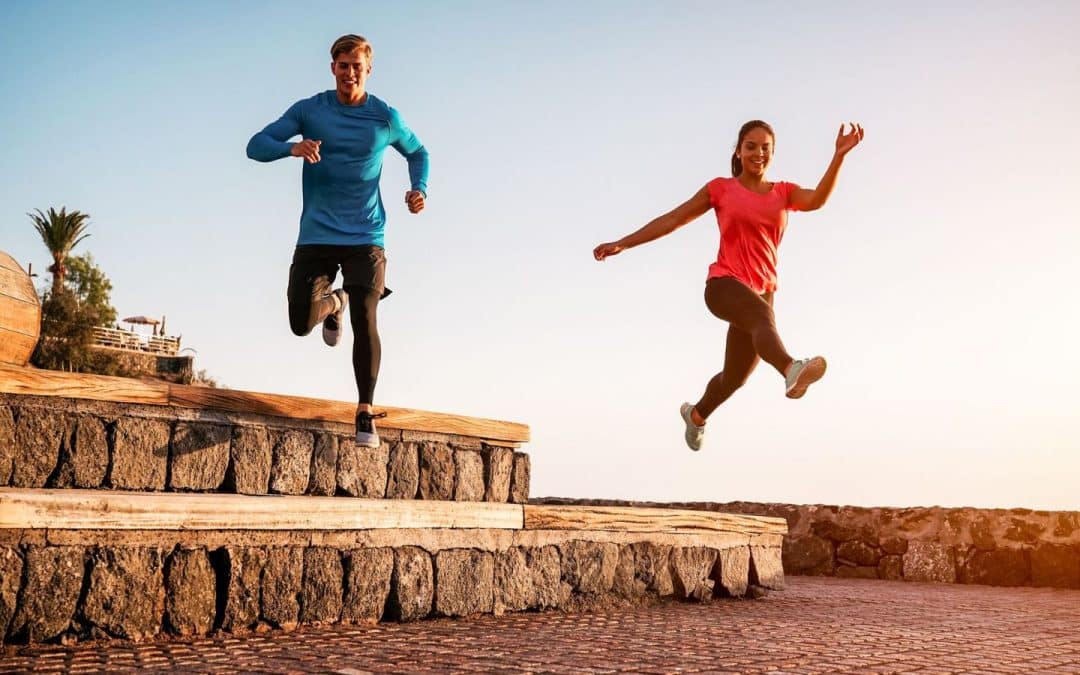
by Colin Beattie | Mar 24, 2024 | news
The Importance of Strength Training for Runners
As runners, we’re often consumed by the pursuit of increasing mileage and speed. However, there’s an often-overlooked aspect that can make a substantial difference in our performance and longevity: heavy strength training. In this comprehensive guide, we’ll delve into the evidence supporting the significance of strength training for runners, explore key exercises tailored for optimal results, and provide a structured approach to integrating strength training into your running regimen.
Weight Training Can Have Huge Benefits
Strength training isn’t just a complementary activity for runners; it’s a cornerstone of performance enhancement and injury prevention. Research across various scientific journals underscores the profound impact that strength training can have on a runner’s capabilities.
1. Enhanced Running Economy: A seminal study published in the Journal of Strength and Conditioning Research elucidated that integrating heavy strength training into a runner’s routine significantly improves running economy. Running economy refers to the energy cost of maintaining a specific pace, and improvements in this metric translate to enhanced endurance and faster race times. By strengthening key muscle groups, runners can sustain their pace with reduced energy expenditure, unlocking their full potential on the track or trail.
2. Mitigation of Injury Risk: Running is a repetitive, high-impact activity that places increased stress on the musculoskeletal system. Consequently, runners are susceptible to a myriad of overuse injuries, ranging from shin splints to stress fractures. However, research published in the British Journal of Sports Medicine affirms that targeted strength exercises can effectively reduce the risk of such injuries. By fortifying muscles and connective tissues, strength exercises for runners address underlying imbalances and weaknesses, thereby bolstering the body’s resilience against common running-related ailments.
3. Optimization of Running Mechanics: Efficient running mechanics are pivotal for maximizing performance and minimizing the risk of injury. Weaknesses or imbalances in muscle strength can compromise biomechanical integrity, leading to inefficiencies and increased strain on certain body regions. Through exercises such as squats, lunges, and single-leg movements, runners can enhance their stability, balance, and coordination. These improvements translate to a smoother stride pattern, reduced ground contact time, and enhanced energy transfer, ultimately propelling runners toward their goals with greater efficiency.
Key Exercises for Runners
Having established the importance of strength training, let’s delve into a curated selection of exercises tailored specifically for runners:
4. Squats: The squat reigns supreme as one of the most effective compound exercises for runners. By engaging the quadriceps, hamstrings, glutes, and core, squats facilitate the development of lower body strength and power essential for propulsion during runs. Whether performed with a barbell, dumbbells, or bodyweight alone, squats offer a versatile means of building functional strength while concurrently improving joint stability and mobility.
5. Lunges: Lunges encompass a spectrum of dynamic movements that target various muscle groups in the lower body. Forward lunges, reverse lunges, and lateral lunges engage the quadriceps, hamstrings, glutes, and hip stabilizers, making them invaluable for correcting muscular imbalances and enhancing unilateral strength. Additionally, lunges promote proprioception and kinesthetic awareness, fostering greater coordination and control during running strides.
6. Bodyweight Exercises: While running primarily engages the lower body, neglecting the upper body and core can compromise overall performance and stability. Incorporating bodyweight exercises such as push-ups, pull-ups, planks, and dips into your strength training regimen ensures a well-rounded approach to muscular development. Strong arms, shoulders, and core muscles contribute to improved posture, reduced upper body fatigue, and enhanced arm drive—factors that can significantly impact running efficiency, especially during prolonged efforts.
7. Single-Leg Exercises: Running is fundamentally a series of single-leg movements, making unilateral strength crucial for biomechanical symmetry and injury prevention. Single-leg squats, Bulgarian split squats, step-ups, and single-leg deadlifts challenge balance, stability, and coordination while effectively targeting each leg independently. By addressing discrepancies in strength and mobility between the limbs, these exercises promote functional symmetry and reduce the likelihood of compensatory patterns that may predispose runners to overuse injuries.
Creating a Structured Strength Training Plan
To capitalize on the benefits of strength training for running, it’s imperative to devise a structured plan that complements your running schedule and goals. Here’s a systematic approach to integrating strength training into your weekly routine:
8. Frequency: Plan to incorporate 2-3 dedicated strength training sessions per week, ideally on non-consecutive days, to allow for adequate recovery between sessions. Consistency is key—committing to regular strength workouts will yield cumulative benefits over time.
9. Exercise Selection: Prioritize compound movements that recruit multiple muscle groups simultaneously, such as squats, lunges, deadlifts, and push-ups. Supplement these foundational exercises with targeted drills aimed at addressing specific weaknesses or imbalances identified through functional assessments or gait analysis.
10. Progressive Overload: Adopt a progressive approach to resistance training by gradually increasing the intensity, volume, or complexity of your workouts over time. Whether through incremental weight increments, additional repetitions, or advanced variations of exercises, progressive overload stimulates continuous adaptations in strength, endurance, and neuromuscular coordination.
11. Periodization: Implement periodization principles to vary the focus and intensity of your strength training across different phases of your training cycle. Incorporate periods of higher volume of lifting in the off seasons ( 2-4x/wk) and lower volume of running ( 1-2x/wk), which, through the year, changes to a higher volume of running and lower volume intensity as competition or peak season approaches allows for a balanced workload. This reduces overtraining and burnout while promoting movement variability and maximum performance yield during the running season.
Conclusion
In the pursuit of running excellence, strength training emerges as a potent ally, capable of elevating performance and fortifying resilience against injury. By integrating evidence-based strength training principles and key exercises into your regimen, you can unlock your full potential as a runner and embark on a journey of sustained improvement and achievement. Strengthen your body, empower your stride, and embrace the transformative impact of heavy strength training—it’s the key to maximizing your stride and conquering new horizons with confidence and vigour.
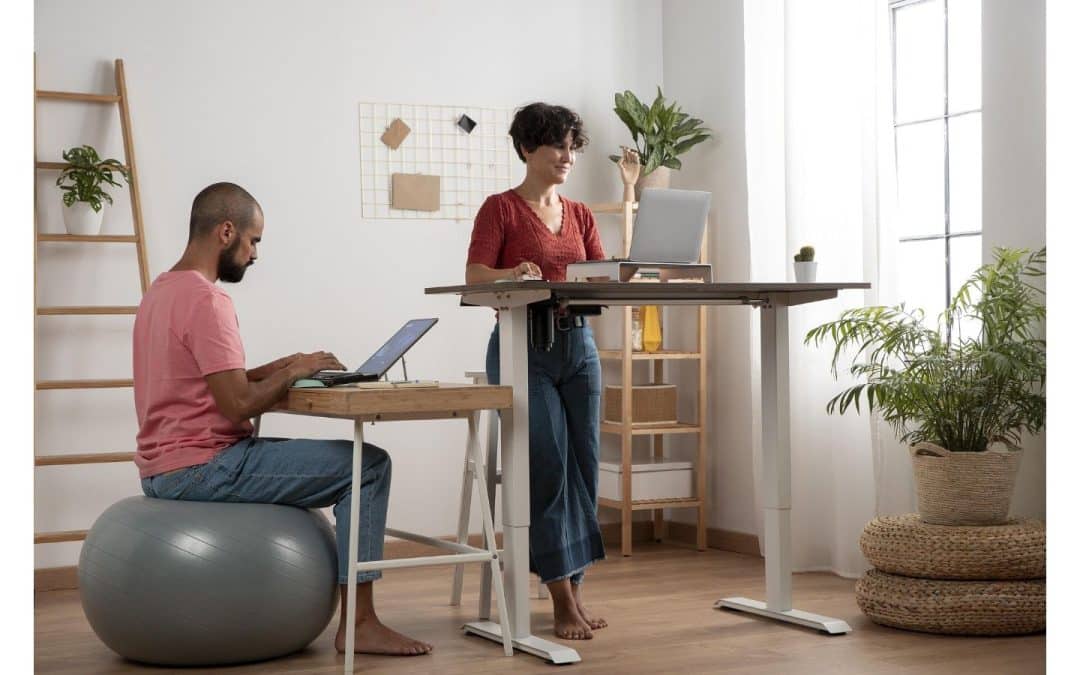
by Jason Nenzel | Mar 10, 2024 | news
Spotlight on Office Ergonomics: Setting Up Your Desk and Workstation | CCOHS Tips
In today’s modern world, where many of us spend the majority of our day seated at a desk, it’s crucial to prioritize the design and arrangement of our workspaces. The concept of ergonomics, which focuses on optimizing human well-being and performance in the working environment, plays a pivotal role in achieving this goal. By understanding and implementing key ergonomic principles, individuals can create workstations that foster comfort, productivity, and long-term health. In this comprehensive guide, we’ll delve into the intricacies of desk ergonomics and workstation setup, exploring the science behind it and providing practical tips for implementation.
Understanding the Science of Ergonomics
Ergonomics is the scientific discipline concerned with designing environments, products, and systems to accommodate the needs and capabilities of individuals. In the context of office ergonomics, the goal is to create workspaces that promote postural resiliency, reduce physical strain, and enhance overall well-being. By aligning the physical requirements of the task with the capabilities of the human body, ergonomic principles aim to minimize the risk of musculoskeletal disorders and improve efficiency and satisfaction in the workplace.
Key Elements of Desk Ergonomics
1. Desk and Chair Height
The height of your desk and chair is pivotal in maintaining proper alignment and reducing strain on your body. Ideally, your desk should be at a height that allows your elbows to rest comfortably at a 90-degree angle when typing, with your wrists straight and parallel to the floor. Similarly, your chair should be adjusted so that your feet rest flat on the floor or on a footrest, with your thighs parallel to the ground and your lower back supported by the chair’s lumbar cushion.
2. Keyboard and Mouse Placement
The placement of your keyboard and mouse can significantly impact your comfort and productivity. Position them at a height that allows your wrists to remain relaxed at about 30 degrees extension (this does not need to be an exact science). Consider using an ergonomic keyboard and mouse with padded wrist support to reduce strain on your wrists and forearms. Additionally, ensure that your mouse is located close to your keyboard to minimize reaching movements.
3. Monitor Positioning
Proper monitor positioning is essential for maintaining good posture and reducing neck strain. Position your monitor directly in front of you at eye level, approximately an arm’s length away. This positioning allows you to maintain a neutral head position without tilting or straining your neck. If using a laptop, consider using a laptop stand or external monitor to achieve the optimal height and angle.
4. Posture and Seating
Maintaining good posture while seated is critical for reducing the risk of back pain and discomfort. Sit back in your chair with your back supported by the chair’s backrest, ensuring your shoulders are relaxed. Avoid slouching or leaning forward, as this can lead to joint sensitization and muscle fatigue. Additionally, adjust your chair’s height and tilt to ensure that your thighs are parallel to the ground and your feet are firmly planted on the floor or a footrest.
5. Workspace Organization
A well-organized workspace can improve efficiency and reduce the risk of repetitive strain injuries. Keep frequently used items within easy reach to minimize reaching and twisting movements. Use cable management systems to keep cords and cables tidy and out of the way. Consider investing in ergonomic accessories such as document holders and monitor arms to optimize your workspace layout and reduce clutter.
The Benefits of Ergonomic Workstations
Implementing ergonomic principles in your workstation setup offers a multitude of benefits, including:
- Reduced Risk of Musculoskeletal Disorders: Proper ergonomics can help prevent common workplace injuries such as back pain, neck strain, and carpal tunnel syndrome.
- Improved Comfort and Productivity: A well-designed workspace promotes comfort and reduces fatigue, allowing you to focus on tasks for longer periods without discomfort.
- Enhanced Efficiency and Performance: By optimizing your workstation layout and posture, you can improve workflow efficiency and overall performance.
- Long-Term Health and Well-Being: Investing in ergonomic equipment and practices can contribute to better long-term health outcomes, reducing the likelihood of chronic pain and disability.
Practical Tips for Implementing Ergonomics in the Workplace
- Conduct a Workspace Assessment: Evaluate your current workstation setup and identify any areas that may need improvement. Pay attention to desk height, chair adjustment, monitor positioning, and overall ergonomics.
- Invest in Ergonomic Furniture and Accessories: Consider upgrading to ergonomic furniture such as adjustable desks, ergonomic chairs, and keyboard trays. Additionally, invest in accessories such as wrist rests, monitor arms, and footrests to further enhance comfort and support.
- Take Regular Breaks: Incorporate regular breaks into your workday. This allows the body and nervous system to experience variability in movement, creating reference points for threats and improving pain thresholds. Use this time to change positions, walk around, and engage in gentle stretching or mobility exercises to alleviate tension and fatigue.
- Practice Good Posture Habits: Be mindful of your posture throughout the day and make adjustments as needed. Focus on sitting back in your chair with your back supported, shoulders relaxed, and feet flat on the floor.
- Stay Active Outside of Work: Engage in regular physical activity outside of work to strengthen your muscles, improve flexibility, and reduce the risk of musculoskeletal issues. Incorporate activities such as walking, yoga, or strength training into your routine to promote overall well-being.
Conclusion
Desk ergonomics and workstation setup play a crucial role in promoting comfort, productivity, and long-term health in the workplace. We live in a society where the majority of jobs encourage sedentary behaviours, and our body needs movement variability in order to accurately inform us ( through pain) of threats to our well-being. Sedentary jobs often result in a relatively low risk of structural harm, but that does not absolve them from creating profound pain.
By understanding and implementing key ergonomic principles, individuals can create workspaces that support postural resiliency, reduce physical strain, and enhance overall well-being. Whether you’re working in a traditional office setting or from the comfort of your home, investing in ergonomic equipment and practices can make a significant difference in your comfort, efficiency, and satisfaction at work. Take the time to assess your workstation setup, make necessary adjustments, and reap the benefits of a well-designed ergonomic workspace.
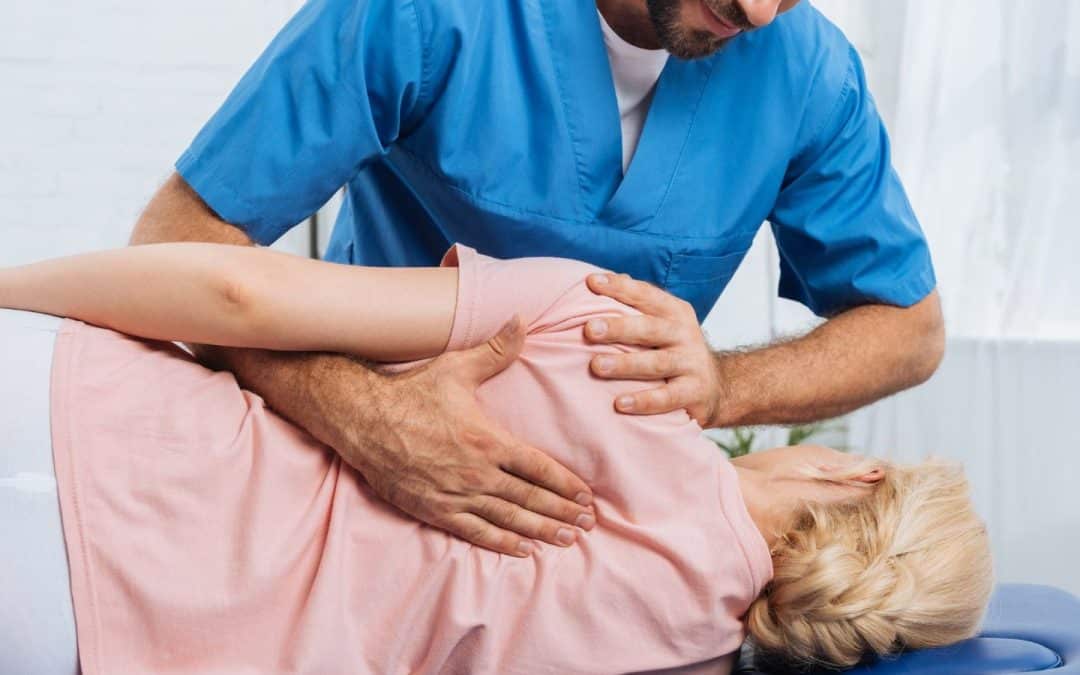
by Colin Beattie | Feb 12, 2024 | news
The Science of Spinal Manipulation: Exploring Chiropractic Techniques
Embarking on the journey of pain management, particularly in the realms of lower back and neck pain, often leads individuals to consider chiropractic care. At the core of this approach lies the chiropractic adjustment, a therapeutic technique where controlled force is applied to specific joints, primarily in the spine.
In this extensive exploration, we will delve into the intricacies occurring within the body during a chiropractic adjustment, emphasizing its role in reducing pain, addressing stiffness, and enhancing overall musculoskeletal function.
Understanding Chiropractic Adjustments
Chiropractic adjustments, synonymous with spinal manipulations, play a pivotal role in the chiropractic profession. This chiropractic technique involves applying controlled force to specific joints, predominantly in the spine, to rectify movement limitations and optimize nervous system function. Such adjustments are known to play a crucial role in pain relief, not only for low back pain but also for various musculoskeletal issues.
Neck Pain and Chiropractic Treatment
Neck pain is a common ailment that can significantly impact daily life. Chiropractic care extends its efficacy beyond the lower back, offering a valuable treatment option for individuals experiencing neck pain. The therapeutic benefits of chiropractic adjustments in addressing neck pain are well-documented. By applying targeted force to the vertebrae in the cervical spine, chiropractors aim to alleviate muscle spasms, reduce stiffness, and enhance overall neck function.
The Safety of Chiropractic
Prior to getting a chiropractic adjustment, concerns about safety often arise. The chiropractic profession places a strong emphasis on the safety of chiropractic adjustment techniques. Licensed and trained chiropractors employ various methods to ensure both safety and efficacy of their interventions. These approaches prioritize patient well-being, aiming to alleviate pain, reduce stiffness, and enhance joint function while minimizing adverse effects.
The conventional narrative is that a patient will see a chiropractor to “re-align” the vertebrae. The truth is there are a number of redundancies in the form of ligament protection that don’t allow dramatic movement of the vertebrae in the first place, so the popping sound heard is not the relocation of bones but rather a side effect of the treatment itself.
In fact, the joints do not have to pop at all for the technique to work. Knowing this allows the chiropractic to maneuver the spine in a gentle way to place the joint in the optimal position to apply a controlled force that has the effect of “ resetting” the muscle tension in the affected region.
Efficacy in Pain Relief
Research consistently supports the effectiveness of chiropractic adjustments in reducing pain, both in the lower back and the neck. A systematic review of the literature conducted by the American College of Physicians highlighted the positive effects of spinal manipulation, a key component of chiropractic care, in managing not only lower back pain but also neck pain.
Patients seeking chiropractic care often experience pain relief within 24 hours, showcasing the swift impact of these adjustments. The exact mechanism of effect during a chiropractic manipulation remains elusive, but data shows that adjustments given at the right time and for the right person can dramatically reduce muscle spasms and improve pain threshold, leading to a shorter duration of back pain compared to not receiving a spinal adjustment at all.
Specific Conditions and Pain Management
Chiropractic adjustments are not limited to addressing low back and neck pain; they extend to managing sciatica, joint pain, leg pain, and other musculoskeletal issues like ankle sprains, shoulder strains, etc.
The chiropractic adjustment refers to a chiropractor using manual manipulation of the spine, employing various techniques to treat and prevent pain issues associated with joints or muscles. Chiropractors are equipped to assess a patient’s medical history and perform a thorough examination to tailor a treatment plan that best suits the type of pain experienced.
The Role of Inflammation
Chiropractic adjustments might also contribute to pain relief by reducing inflammation. Evidence suggests that spinal manipulative therapy can help reduce inflammatory responses in the body, offering an adjunct to traditional medical care that often relies on pain relievers. For individuals experiencing back and neck pain, seeking chiropractic care can provide a holistic approach that addresses both symptoms and underlying causes.
Safety and Adverse Events
Concerns about adverse events associated with chiropractic adjustments are a valid consideration. However, research supports the overall safety of chiropractic care when administered by a trained and licensed healthcare provider. Serious side effects are rare, and any increased pain following an adjustment typically resolves within 24 hours. It is essential for individuals to communicate openly with their chiropractors, providing feedback to ensure a positive and tailored experience.
Chiropractic Adjustment Techniques
Chiropractors employ various adjustment techniques, each designed to address specific pain issues, including neck pain and stiffness. These techniques include joint cavitation, where a quick thrust is applied to a joint to produce a cracking sound, and spinal mobilization, a gentler manual manipulation of the spine. The amount of force applied during chiropractic adjustments is carefully controlled, ensuring a therapeutic treatment that enhances the normal range of motion and improves joint function.
Integration with Traditional Medical Care
Chiropractic care is not a standalone solution; rather, it complements an active/ adaptive exercise strategy to ensure the body can achieve durable results. Many chiropractors work in conjunction with physiotherapists, RMTs, and kinesiologists, offering a collaborative approach to pain management. This integration allows patients to benefit from a collaborative, patient-centred care plan, ensuring comprehensive and personalized success.
Conclusion
In conclusion, chiropractic adjustments, as a therapeutic treatment, play a vital role in reducing pain, enhancing joint function, and promoting overall musculoskeletal health, not only in the lower back but also in addressing neck pain. Supported by a robust body of evidence, chiropractic care offers a safe and effective option for those experiencing lower back and neck pain and various musculoskeletal issues.
We are grateful to have the support and collaboration of Dr. Kevin Sommerfeldt here at South Island Physiotherapy to meet the needs of our patients and offer his unique perspective in order to provide a dynamic and bespoke interdisciplinary approach to well-being. For more information/interest regarding the use of adjustments for your recovery, Dr. Sommerfeldt is available to discuss and treat any of your concerns and get you back to your joy!
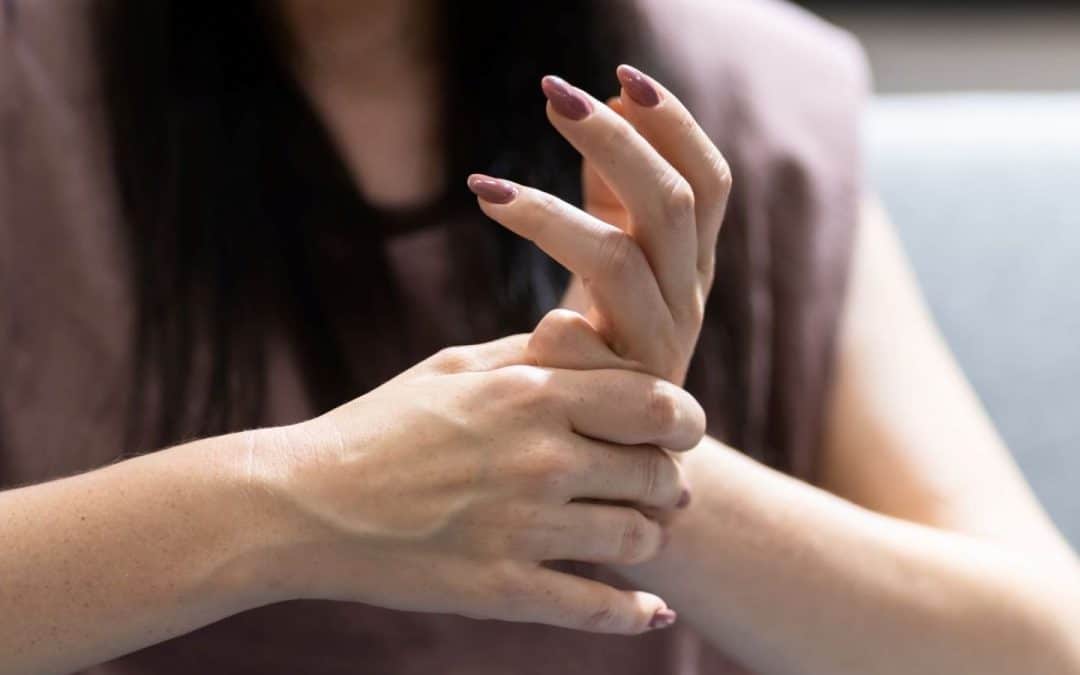
by Colin Beattie | Jan 25, 2024 | news
What Happens When You Crack Your Knuckles? Debunking Myths and Arthritis Concerns
The habit of cracking one’s knuckles has long been a subject of fascination and debate, often accompanied by concerns about its potential adverse effects on joint health, including the feared association with arthritis.
In this in-depth exploration, we will unravel the intricacies surrounding knuckle cracking, delving into the mechanisms, scrutinizing the myths, and consulting expert opinions to provide a comprehensive understanding of whether this common practice is truly detrimental to your joints.
Cracking Your Knuckles – Unraveling the Mechanism
Cracking one’s knuckles is a seemingly simple yet intriguing act. The process involves the deliberate manipulation of joints to produce the characteristic popping sound. At the core of this phenomenon is the joint capsule – a fibrous structure that surrounds the joint and contains synovial fluid. When the joint is manipulated through stretching or bending, a negative pressure is created within the joint capsule.
- Joint Capsule Stretching: The audible pop during knuckle cracking is initiated by the stretching of the joint capsule. As the fingers are bent or pulled, the pressure within the synovial fluid decreases, leading to the formation of gas bubbles.
- Bubble Formation: The stretching allows dissolved gases, such as oxygen and nitrogen, present in the synovial fluid to come together and form bubbles within the joint space.
- Bubble Collapse: The bubbles formed subsequently collapse or burst, releasing energy and generating the distinctive popping or cracking sound associated with knuckle cracking.
Synovial Fluid and Joint Health
The synovial fluid is responsible for lubricating your joints. Contrary to prevailing myths, research suggests that the manipulation involved in knuckle cracking does not adversely impact the synovial fluid or the structures it surrounds, including cartilage and bones.
Debunking Osteoarthritis Myths
- No Increased Risk of Arthritis: Despite the widespread belief that knuckle cracking may lead to arthritis, multiple studies, including those published in reputable medical journals, consistently refute this claim. The evidence indicates that cracking one’s knuckles does not elevate the risk for arthritis.
- Grip Strength and Joint Function: Addressing concerns about potential weakening of grip strength or impairment of joint function, research reveals that habitual knuckle crackers show no significant differences in these aspects compared to individuals who refrain from the practice.
Addressing Concerns – Temporary Effects
- Temporary Hand Swelling and Discomfort: It is acknowledged that some individuals may experience temporary hand swelling or discomfort after cracking their knuckles. However, it is crucial to note that these effects are transient and do not translate into long-term joint damage or persistent pain.
- No Evidence of Chronic Inflammation: Scientific studies consistently fail to establish a link between habitual knuckle cracking and chronic inflammation, dispelling concerns that this common practice may cause enduring discomfort or swelling.
Expert Opinions
Physiotherapists, chiropractors, and other medical professionals, like the team at South Island Physiotherapy, emphasize the benign nature of knuckle cracking. According to these experts, the act may be accompanied by a characteristic sound, but it is not indicative of joint damage or a precursor to arthritis.
In-Depth Exploration – The Mechanics and Beyond
- The Role of Nitrogen Bubbles: Nitrogen bubbles, formed within the synovial fluid during knuckle cracking, contribute to the audible release of pressure. Understanding the dynamics of these bubbles helps demystify the process and underscores its harmless nature.
- Stretching and Joint Health: Contrary to the belief that knuckle cracking may compromise joint health, the stretching involved in this act is considered by experts as a normal range of motion that doesn’t cause harm to the ligaments or surrounding structures.
- Therapist insights: Physiotherapists, who specialize in the musculoskeletal system, consistently assert that knuckle cracking doesn’t cause arthritis. The sound, while disconcerting to some, is not indicative of any underlying joint pathology.
Conclusion
In conclusion, the scientific evidence overwhelmingly supports the notion that cracking your knuckles is not detrimental to joint health. The mechanism, involving the formation and collapse of gas bubbles within the synovial fluid, is a natural expression that does not contribute to arthritis or long-term joint issues. Expert opinions and comprehensive research findings converge to dispel the myths surrounding knuckle cracking, reassuring those who find solace in this habitual act.
As a final note, maintaining a healthy lifestyle, including regular exercise and a balanced diet, remains pivotal for overall joint well-being. So, feel free to indulge in the occasional knuckle crack – the evidence suggests that your joints are likely to remain unharmed.
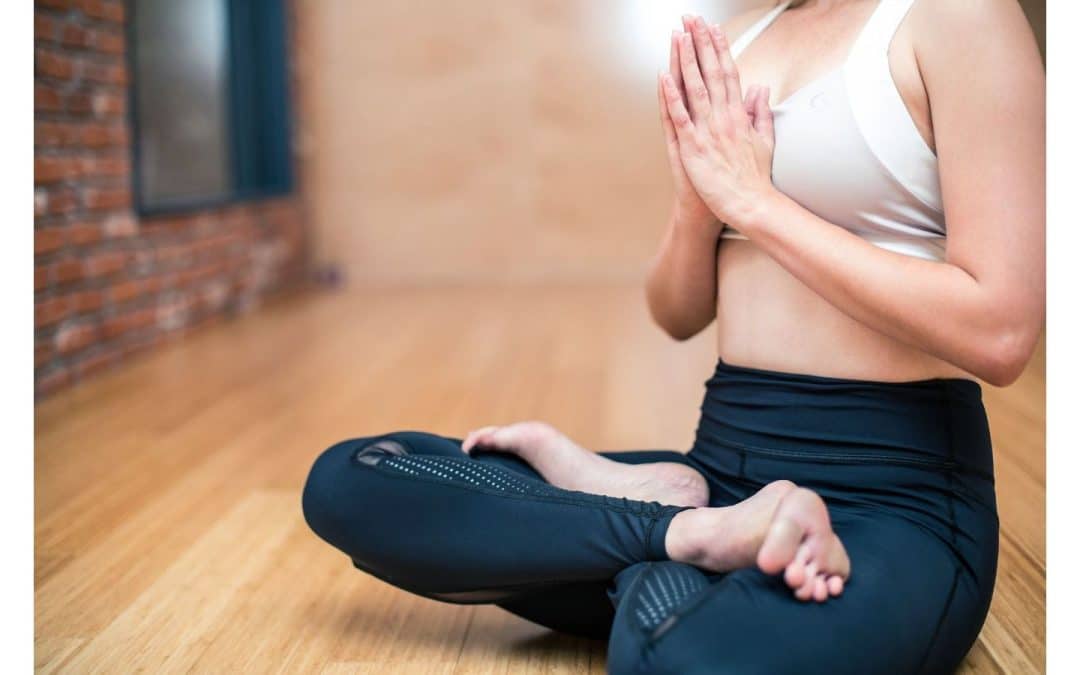
by Jason Nenzel | Dec 19, 2023 | news
Essential Wellness Tips for a Healthy Year Ahead
In the hustle and bustle of modern life, achieving and maintaining overall wellness in 2024 has become a paramount goal for many individuals. Wellness is not merely the absence of illness but a dynamic process that encompasses the integration of the mind, body, and spirit.
In this blog post, we’ll delve into the four main pillars of human experience that play a crucial role in fostering holistic wellness: physical exercise, mental health, sleep health, and dietary health.
Physical Exercise
Engaging in regular physical exercise is a cornerstone of a healthy lifestyle. Without going into the boring science, it remains the single most potent form of medication to fight against illness and disease. It not only helps in maintaining a healthy weight but also has numerous benefits for cardiovascular health, muscle strength, and overall vitality.
There are 11 main adaptations the body can undergo through participation in exercise. These are:
- Strength
- Power
- Flexibility
- Balance and stability
- Skill acquisition
- Cardiovascular fitness (which is subdivided into anaerobic adaptation and aerobic adaptation)
- Speed
- Endurance
- Hypertrophy
- Power
- Long-duration training
Everyone will prioritize or excel in certain domains due to their personal preferences and history, but incorporating a variety of exercises, such as cardiovascular workouts, strength training, and flexibility exercises, can provide a well-rounded approach to physical fitness.
- Cardiovascular exercises, like running, swimming, or cycling, elevate the heart rate and improve circulation, promoting a healthier cardiovascular system.
- Strength training, on the other hand, helps build and maintain muscle mass, which is essential for metabolism and overall strength.
- Flexibility exercises, such as yoga or Pilates, enhance joint mobility and reduce the risk of injury.
Regular physical activity has also been linked to improved mood and reduced stress levels. The release of endorphins during exercise contributes to a sense of well-being and can act as a natural mood booster. Finding activities that one enjoys and can consistently incorporate into their routine is key to reaping the long-term benefits of physical exercise.
Mental Health
In the pursuit of holistic wellness, mental health and happiness is a crucial aspect that cannot be overlooked. The mind and body are intricately connected, and nurturing one positively influences the other. Practices such as mindfulness meditation, deep breathing exercises, and spending time in nature can have profound effects on mental well-being.
Mindfulness meditation, rooted in ancient practices, has gained popularity for its ability to reduce stress and improve focus. Taking just a few minutes each day to sit quietly, focus on the breath, and bring attention to the present moment can significantly enhance mental clarity, emotional balance as well as sleep quality and digestive health. Practically speaking, this is due to cortisol management (our stress hormone).
Deep breathing exercises, such as diaphragmatic breathing or the 4-7-8 technique, can activate the body’s relaxation response, promoting a sense of calm and reducing anxiety. Incorporating these techniques into daily routines, especially during stressful situations, can contribute to better mental resilience.
Nature, too, plays a vital role in mental health. Spending time outdoors has been associated with improved mood, reduced symptoms of depression, and increased creativity. Whether it’s a walk in the park, a hike in the mountains, or simply sitting in a garden, connecting with nature can provide a refreshing perspective and a mental reset.
Sleep Health
Quality sleep is a cornerstone of optimal health, and its impact extends to both physical and mental well-being. The body undergoes essential processes during sleep, such as tissue repair, hormone regulation, memory consolidation and even its own cleaning cycle in order to prepare yourself for the experiences of the following day. Establishing healthy sleep habits is crucial for overall wellness.
Creating a conducive sleep environment involves maintaining a consistent sleep schedule, ensuring a comfortable mattress and pillows, and minimizing exposure to electronic devices before bedtime managing ambient room temperature ( ideal is 18 degrees C). The blue light emitted by screens can interfere with the production of the sleep hormone melatonin, making it harder to fall asleep.
Establishing a bedtime routine can signal to the body that it’s time to wind down. This may include activities such as reading a book, taking a warm bath, or practicing relaxation techniques. Avoiding stimulants like caffeine and nicotine in the 8 hours leading up to bedtime can also contribute to a more restful night’s sleep.
Sleep has a profound impact on how we experience ourselves. Adequate and restful sleep of around 7-8.5 hours of sleep a night ( depending on te individual and their unique needs) can reduce stress and anxiety, create an environment for a happy and healthy gut, and contribute to reduction in inflammation of the body. Recognizing and addressing sleep disorders, such as insomnia or sleep apnea, is essential for overall wellness. Consulting with a healthcare professional if sleep issues persist can lead to targeted interventions and improved sleep health.
If 2023 was a year of sleepless nights, let 2024 become a year of sweet dreams!
Dietary Health
The saying “you are what you eat” holds a profound truth when it comes to overall wellness. Proper nutrition is fundamental for supporting bodily functions, maintaining energy levels, and preventing chronic diseases. Adopting a balanced and varied diet that includes a rich array of fruits, vegetables, whole grains, lean proteins, and healthy fats is key as it creates an opportunity for a diverse and flourishing microbiome leading to improved gut health.
Consuming nutrient-dense foods provides the body with essential vitamins and minerals, supporting optimal functioning. A diet rich in antioxidants, found in colourful fruits and vegetables, helps combat oxidative stress and inflammation, contributing to overall health.
Hydration is equally crucial for well-being. Water is essential for various bodily functions, including digestion, nutrient absorption, and temperature regulation. Ensuring an adequate intake of water throughout the day supports overall health and vitality.
Mindful eating is a practice that encourages paying attention to the sensations of eating and savouring each bite. This approach promotes a healthier relationship with food, preventing overeating and fostering a greater appreciation for the nourishment that food provides.
Conclusion
Although this post has divided the human experience into 4 pillars, these aspects of self-care are more of a continuum as each one influences the other for better or for worse, and as such, achieving holistic wellness involves a harmonious integration of physical exercise, mental health, sleep health, and dietary health.
Wellness tips are nice, but we encourage cultivating habits that nurture the body and mind, and if successful, 2024 will see dimensions of well-being that are rich in experience and profound in joy.
Health and wellness can feel overwhelming and complicated, but a positive impact on even one of these areas can create change, so pick one to start and know that the pursuit of well-being is a journey of self-discovery, not a race to win.

